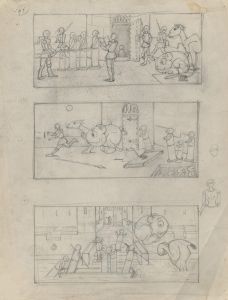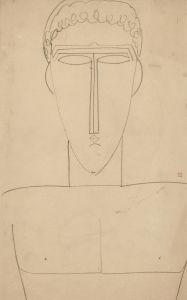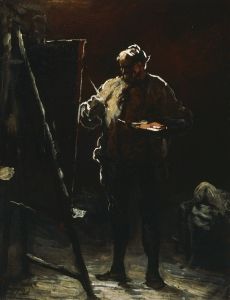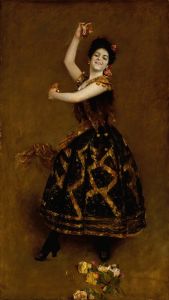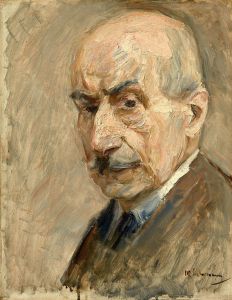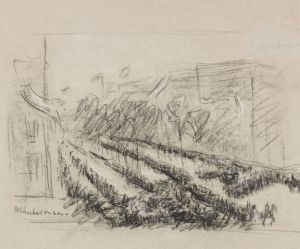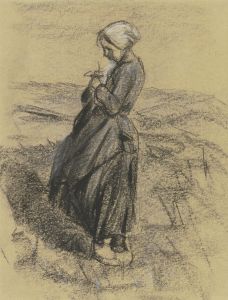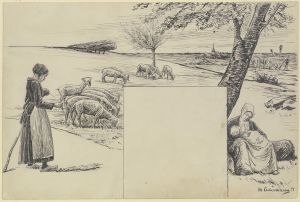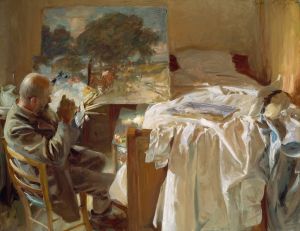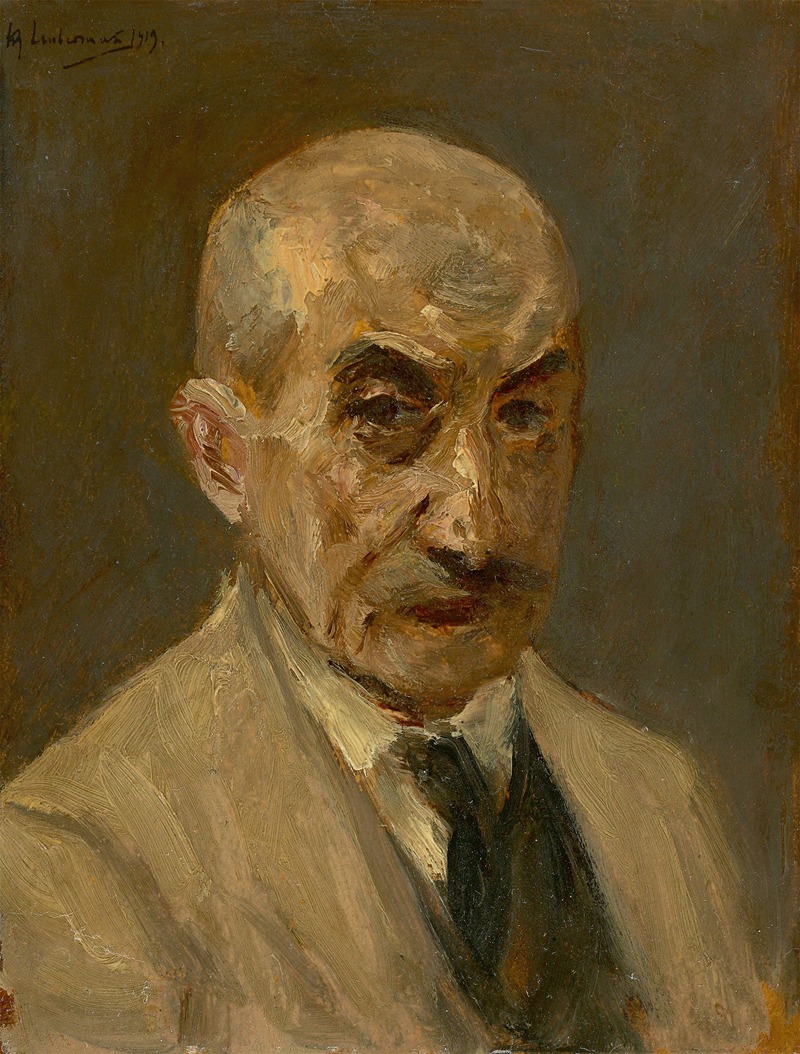
Selbstbildnis im Malkittel, Büste nach rechts
A hand-painted replica of Max Liebermann’s masterpiece Selbstbildnis im Malkittel, Büste nach rechts, meticulously crafted by professional artists to capture the true essence of the original. Each piece is created with museum-quality canvas and rare mineral pigments, carefully painted by experienced artists with delicate brushstrokes and rich, layered colors to perfectly recreate the texture of the original artwork. Unlike machine-printed reproductions, this hand-painted version brings the painting to life, infused with the artist’s emotions and skill in every stroke. Whether for personal collection or home decoration, it instantly elevates the artistic atmosphere of any space.
Max Liebermann was a prominent German painter and printmaker, associated with the Impressionist movement. Among his numerous works, "Selbstbildnis im Malkittel, Büste nach rechts" stands out as a significant self-portrait. This painting, whose title translates to "Self-Portrait in a Painter's Smock, Bust to the Right," is a testament to Liebermann's skill in capturing the essence of his own persona through art.
Created in 1925, this self-portrait is one of several that Liebermann painted throughout his career. The painting depicts Liebermann in a painter's smock, a traditional garment worn by artists to protect their clothing while working. His pose, with the bust turned slightly to the right, suggests a moment of introspection or contemplation. The choice of attire and pose reflects Liebermann's identity as an artist and his dedication to his craft.
Liebermann's technique in this painting is characteristic of his mature style, which combines elements of Impressionism with a more realistic approach. The brushwork is loose yet controlled, allowing for a detailed representation of his facial features while maintaining a sense of spontaneity. The use of light and shadow in the painting highlights the contours of his face, adding depth and dimension to the portrait.
The color palette is relatively subdued, with earthy tones dominating the composition. This choice of colors not only emphasizes the seriousness of the subject but also reflects the somber mood prevalent in Germany during the 1920s, a period marked by political and social upheaval. Despite these challenges, Liebermann continued to create art that was both personal and reflective of the broader cultural context.
Max Liebermann was an influential figure in the Berlin art scene and served as the president of the Prussian Academy of Arts from 1920 to 1932. His leadership and advocacy for modern art significantly impacted the development of German art during the early 20th century. However, his tenure ended abruptly due to the rise of the Nazi regime, which condemned his work and Jewish heritage.
"Selbstbildnis im Malkittel, Büste nach rechts" is more than just a self-portrait; it is a reflection of Liebermann's resilience and commitment to his artistic vision. The painting remains an important piece within his oeuvre, offering insight into the artist's self-perception and the cultural environment of the time.
Today, Max Liebermann is remembered as one of Germany's foremost Impressionists, and his self-portraits continue to be studied for their technical mastery and emotional depth. "Selbstbildnis im Malkittel, Büste nach rechts" is housed in a collection that preserves his legacy, allowing contemporary audiences to appreciate his contribution to the world of art.






